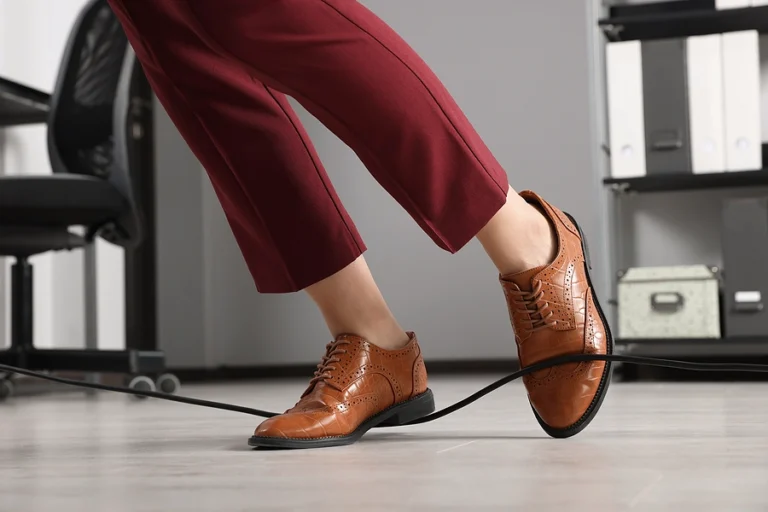How to Document Evidence for a Slip and Fall Claim in West Palm Beach

Slip and fall accidents are a common cause of injuries in West Palm Beach. They can happen anywhere—grocery stores, office buildings, parking lots, or even private residences. While some falls may appear minor, they can result in serious injuries such as broken bones, head trauma, or back injuries. When a slip and fall occurs, documenting evidence properly is essential for pursuing a personal injury claim. Without clear evidence, it can be difficult to prove that the property owner was responsible for the unsafe condition that caused the accident.
Why Evidence Matters in Slip and Fall Cases
Evidence plays a central role in establishing liability in slip and fall claims. Florida law requires that the injured party show that the property owner knew or should have known about the dangerous condition and failed to take reasonable steps to address it. Solid documentation can:
- Demonstrate the hazardous condition that caused the fall
- Show the extent of your injuries and the impact on daily life
- Support your claims for medical expenses, lost wages, and pain and suffering
- Strengthen your credibility with insurance companies or in court
Proper evidence increases the likelihood of fair compensation and prevents disputes over what caused the accident.
Documenting the Scene Immediately
Acting quickly after a slip and fall accident is critical. The condition that caused the fall may change, so capturing details promptly is essential. Key steps include:
- Take photos and videos: Capture the exact area where you fell, any visible hazards, and surrounding conditions. Include wide shots and close-ups.
- Include context: Photograph warning signs, wet floors, uneven surfaces, lighting conditions, and nearby obstacles.
- Document timestamps: If possible, include timestamps in photos or videos to show when the accident occurred.
Immediate documentation ensures that the scene accurately reflects the circumstances that led to your injury.
Collecting Witness Statements
Eyewitnesses can provide powerful support for your slip and fall claim. Witnesses can confirm how the accident happened and describe the hazardous condition. Steps to take include:
- Ask for the names and contact information of anyone who saw the fall
- Record their statements in writing or, if they consent, on video or audio
- Encourage witnesses to provide a clear, factual account of the incident without speculation
Witness statements can corroborate your version of events and counter any claims from the property owner that the hazard did not exist.
Medical Documentation
Medical records are critical in slip and fall claims because they establish the extent of your injuries and the link to the accident. Key elements include:
- Emergency room or urgent care records documenting immediate treatment
- Physician reports detailing the diagnosis, treatment plan, and prognosis
- Imaging results such as X-rays, MRIs, or CT scans
- Physical therapy records and follow-up notes
- Documentation of ongoing pain or limitations caused by the injury
Seek medical attention promptly, even if injuries appear minor. Delays in treatment can weaken a claim by raising questions about causation or the severity of injuries.
Preserving Physical Evidence
In addition to photographs and medical documentation, physical evidence can be crucial:
- Keep clothing, shoes, or personal items that were damaged during the fall
- Retain receipts for medical equipment, therapy, or prescriptions related to the injury
- Preserve any hazardous items, such as broken flooring tiles or wet floor mats, if possible
Physical evidence can provide tangible proof of the conditions that caused the accident and the resulting damage.
Reporting the Accident
Notifying the property owner or management promptly is important. Steps include:
- Ask for a written incident report and obtain a copy
- Provide accurate details without admitting fault
- Note the time, location, and circumstances of the fall
- Keep a record of all communications with the property owner or staff
This creates an official record of the accident, which can be used later in negotiations or court proceedings.
Keeping Personal Notes
Maintaining a personal record of your injuries and recovery process can be valuable:
- Document pain levels, mobility issues, and emotional impacts on daily life
- Record missed workdays and any modifications needed at home or work
- Note medical appointments, treatments, and ongoing limitations
These notes supplement medical records and provide a complete picture of the accident’s impact on your life.
Consulting a Slip and Fall Attorney
A personal injury lawyer in West Palm Beach can guide you through the claims process and ensure your evidence is properly collected and presented. An attorney can:
- Investigate the accident and identify responsible parties
- Obtain additional evidence such as surveillance footage or maintenance logs
- Communicate with insurance companies to pursue fair compensation
- Represent you in settlement negotiations or litigation if needed
Working with an attorney increases your chances of securing full compensation for medical bills, lost wages, and pain and suffering.
Conclusion
Proper documentation is essential for a successful slip and fall claim in West Palm Beach. Photos, videos, witness statements, medical records, physical evidence, and personal notes all contribute to building a strong case. Prompt reporting and legal guidance help protect your rights and maximize compensation. By understanding how to gather and preserve evidence effectively, injured individuals can focus on recovery while ensuring that property owners are held accountable for unsafe conditions.

 Call Us Today - It's Free
Call Us Today - It's Free